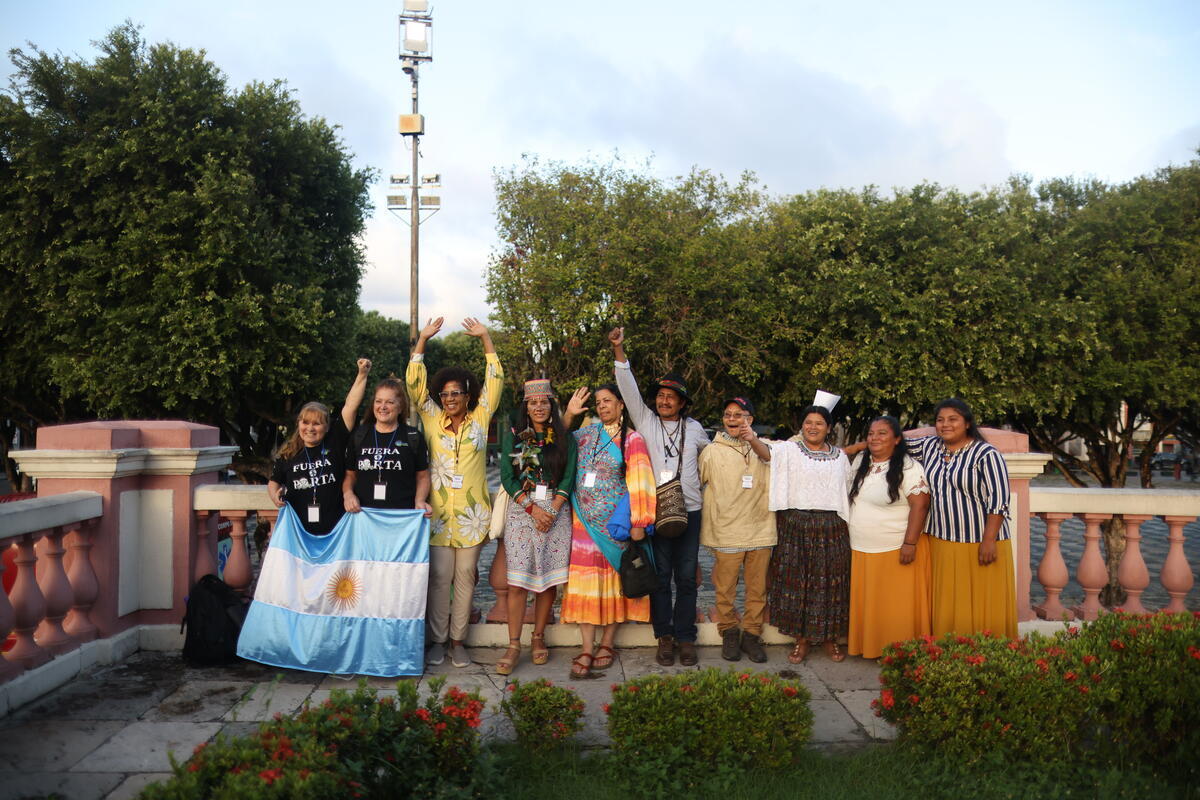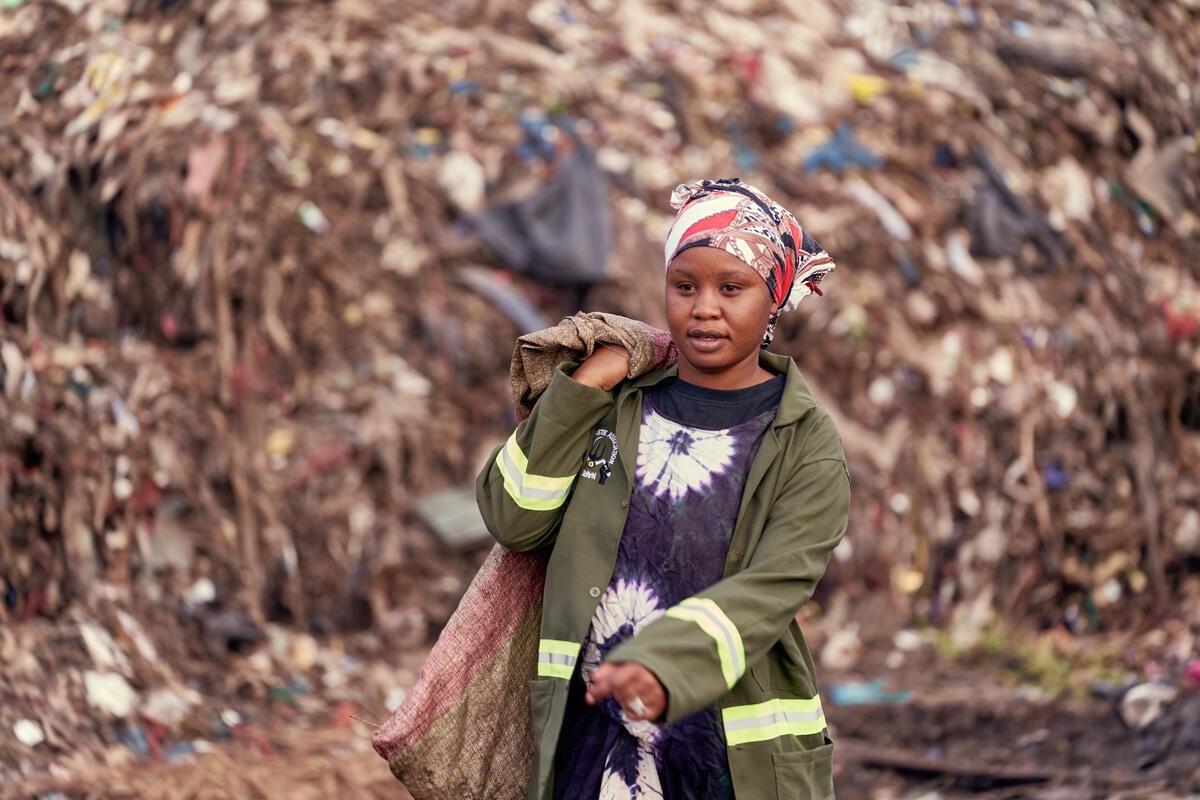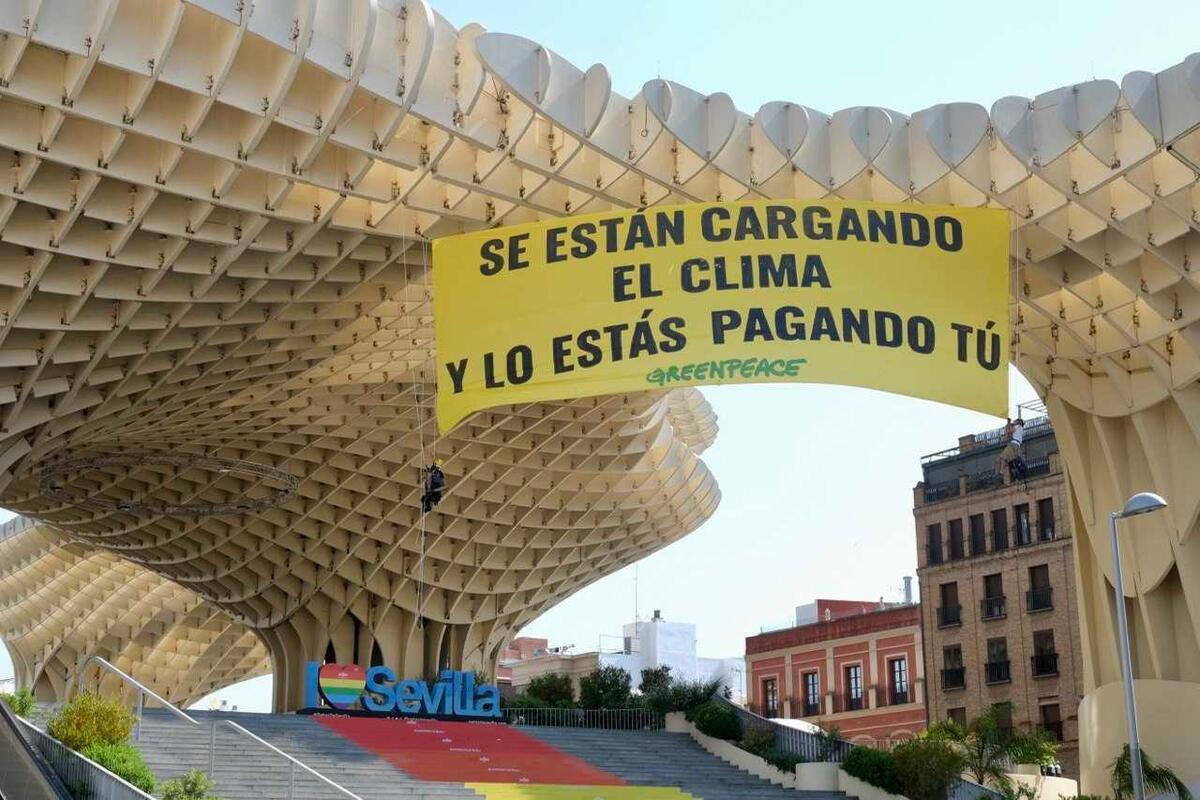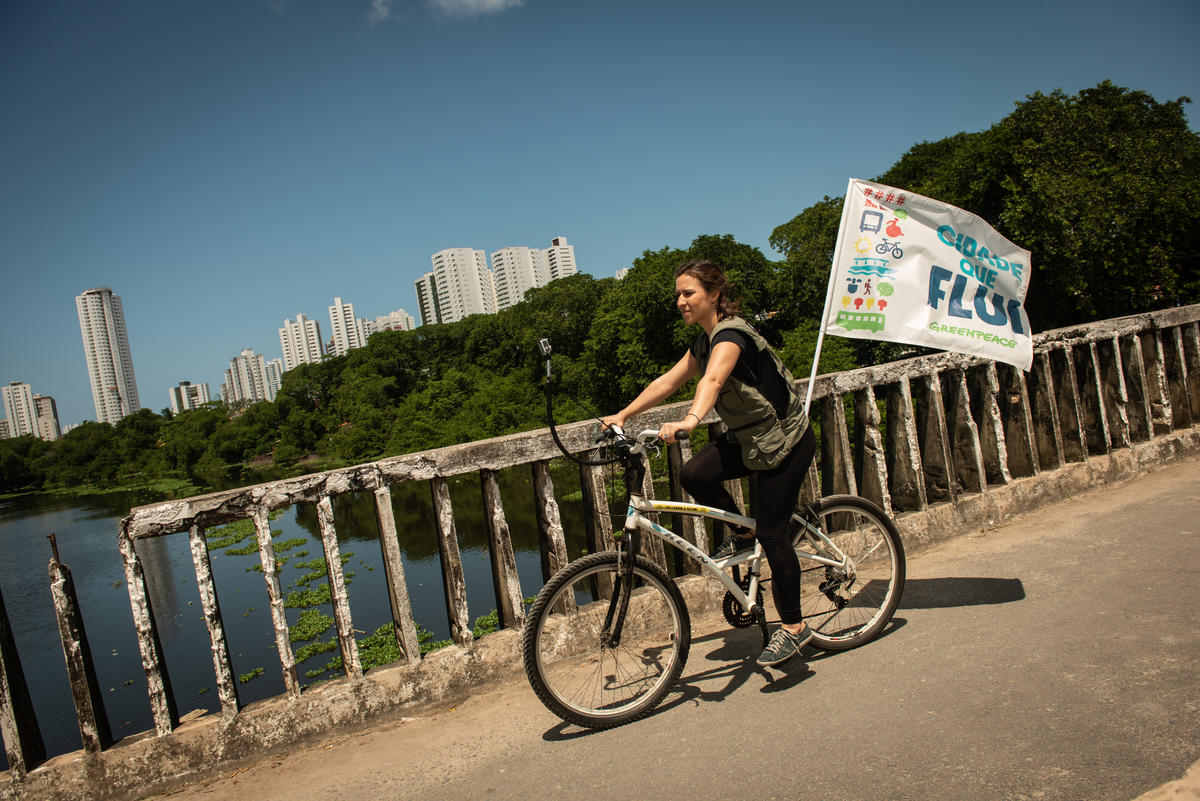
Greenpeace Brazil celebrated International Car-Free Day 2018 in the northeastern city of Recife with a bicycle parade through the Santa Luiza community.
People are the life-blood of cities. Cities host over half of the world’s population, a number expected to grow to nearly 70% by 2050. So we need cities that serve people first, instead of being dominated by cars and traffic.
Cars are noisy, smelly, take up precious pace, and they are really bad for our health. More than 95% of the world’s population breathes dangerous air, which is especially bad news as air pollution is the fourth-leading cause of death worldwide, killing 4.2 million people globally every year.
It’s also a very serious issue for the health of our planet. Recently, Greenpeace released a report based on new research from the German Aerospace Centre that shows we only have ten years to get rid of fossil fuel vehicles if we want to avoid the worst impacts of climate change. The age of fossil fuel vehicles must come to an end.
We have a vision for future cities that are clean, connected, and community-focused. Last month on International Car-Free Day, we got a taste of what the world could be like if we realize future.
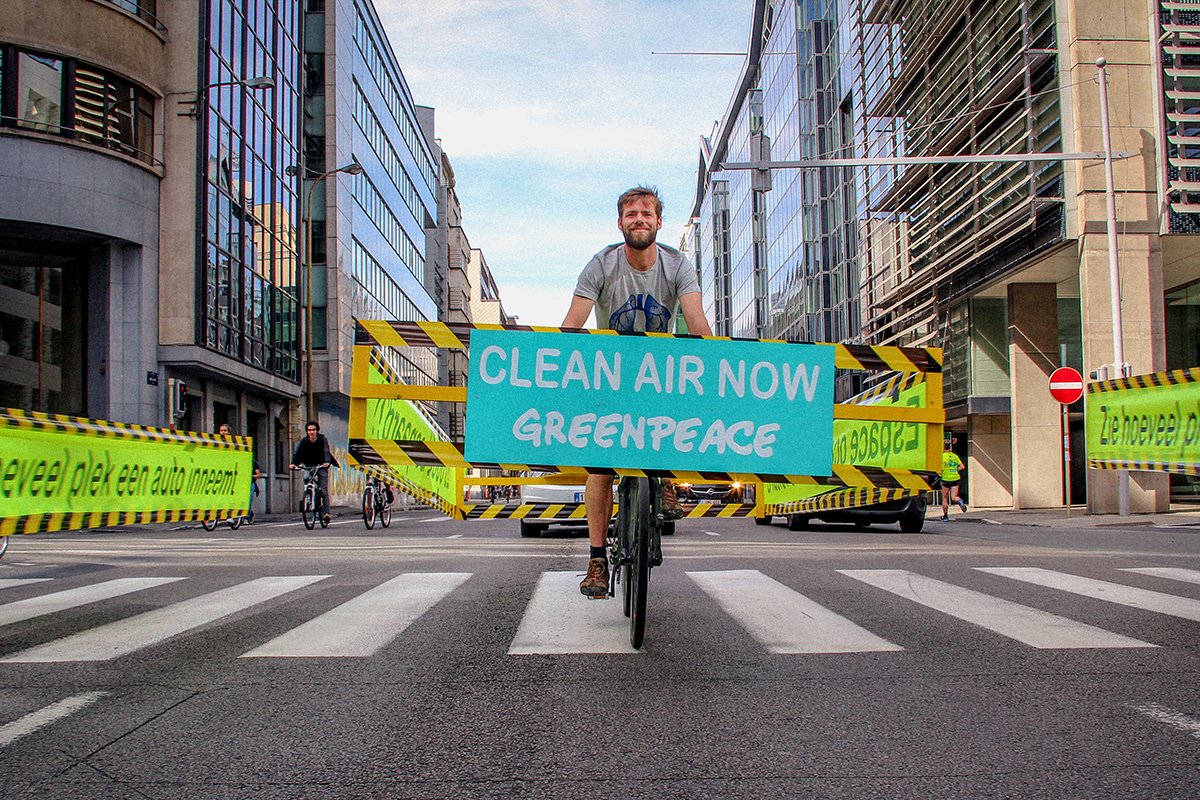
International Car-Free Day activities in Belgium included a bicycle parade through the centre of Brussels.
Here are five ways your city will improve if it starts putting people before cars:
- Less air and noise pollution. When Paris’ city centre went car-free in 2015, levels of nitrogen dioxide dropped by up to 40% in parts of the city, and sound levels dropped by half in the city centre.
- More space for living — not traffic. Freeing up roads from the dominance of traffic makes more room for parks, squares, and community life. Green spaces can also welcome back some of our lost urban biodiversity.
- Better infrastructure for active transport: Walking, bicycling, skateboarding, rollerblading, and other forms of active transport are good for our bodies and the planet. Less space for cars means more space for bike lanes and safe pedestrian infrastructure on our streets.
- More money left for better, renewable energy-powered public transport and more sustainable, electric car sharing schemes. Building and maintaining roads for cars costs a lot of money! Shifting that investment over to sustainable transport means we can have the same convenient mobility without the carbon footprint.
- Getting rid of roads and reducing pollution-emitting cars will help us cool the planet. Parks instead of heat-absorbing roads and concrete would help reduce urban heat islands, and generally make our cities cooler places to live.
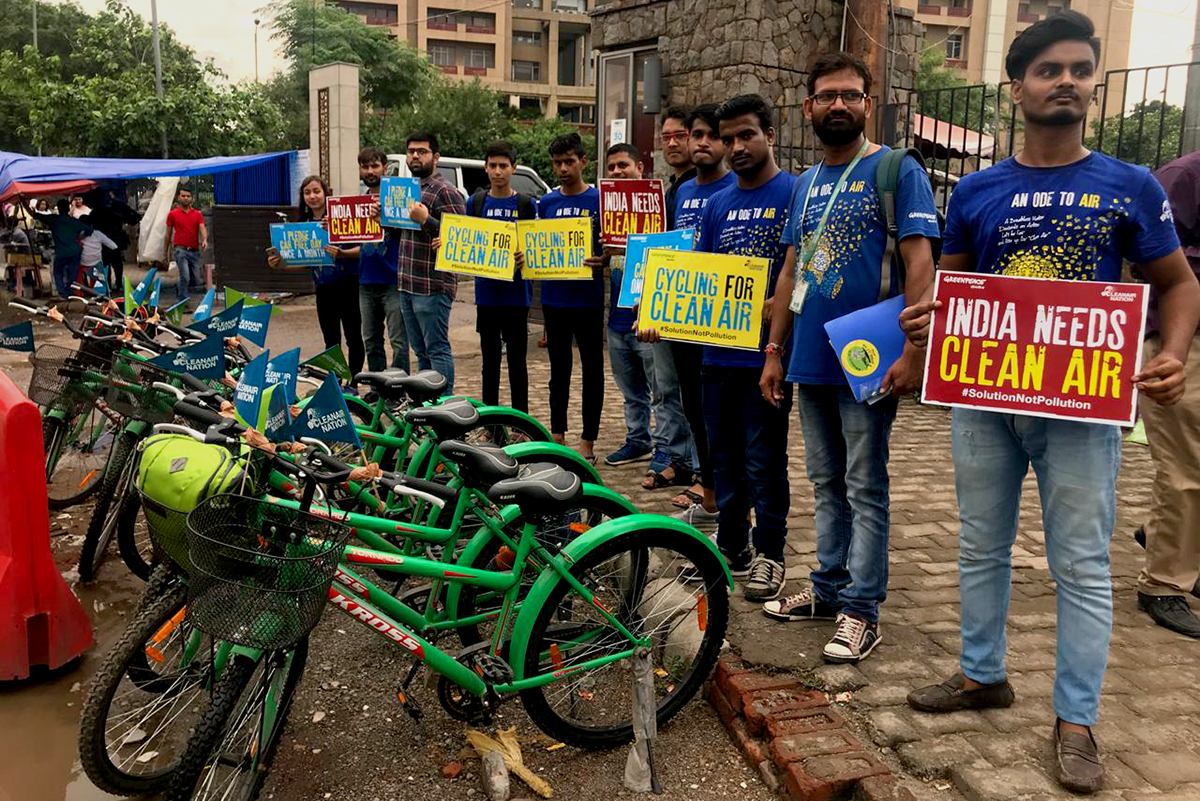
Citizens of New Delhi, India, which suffers from devastating air pollution, marked International Car-Free Day by calling for government action on clean, healthy air.
The best cities are the ones that we don’t just survive in, they are the ones we thrive in. The ones that allow us to live big, bold, beautiful lives. Carnivals. Picnics. Street parties. Street art. Dancing. Singing. Moving. Shaking. Creating. Connecting.
So let’s not stop at International Car-Free Day. Every day, we can move our cities forward to become places for people and the planet. Places that make us happy. Places we love. The age of the car is over — the age of cities for people has begun.
Marie Bout is the communications lead for Greenpeace’s global Urban Revolution project to build more sustainable, livable cities of the future.

